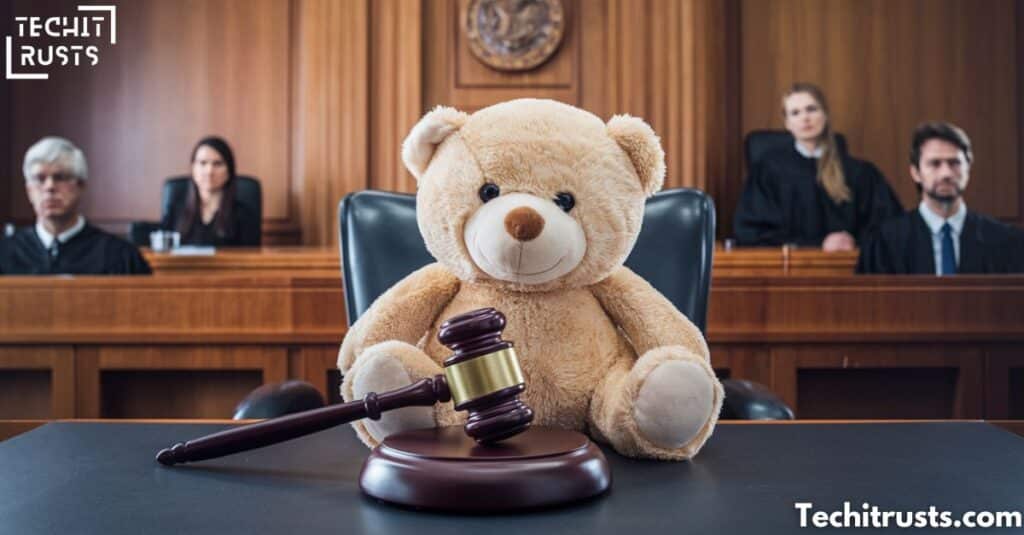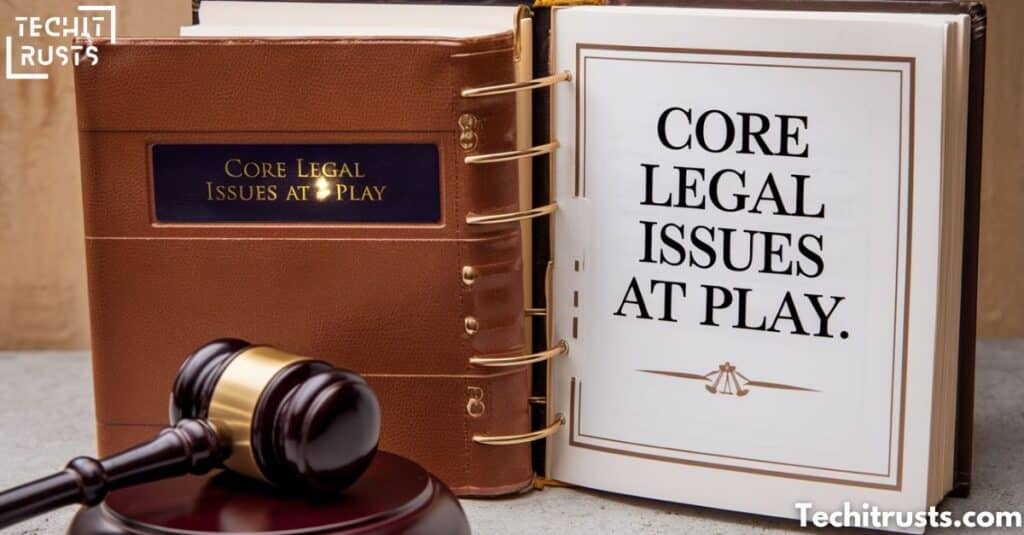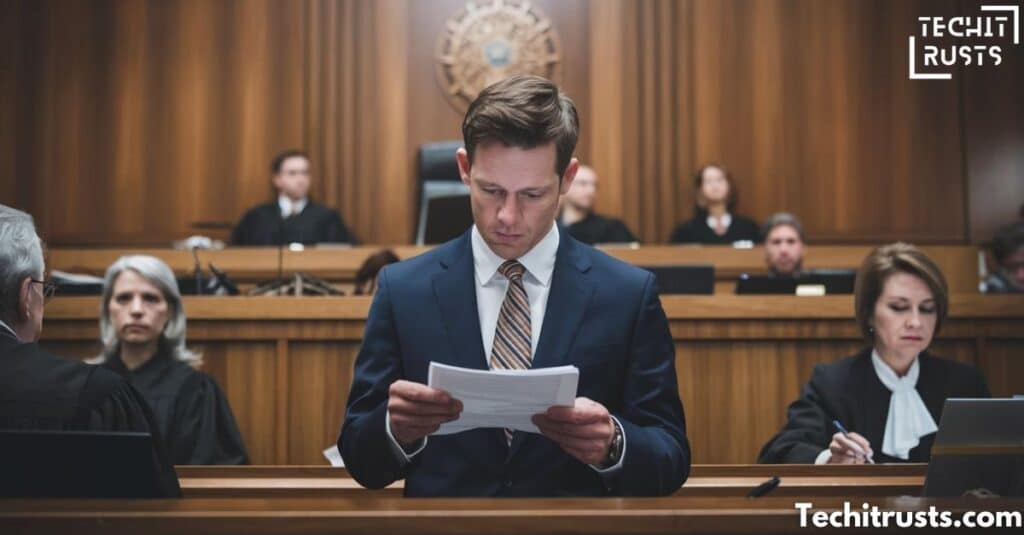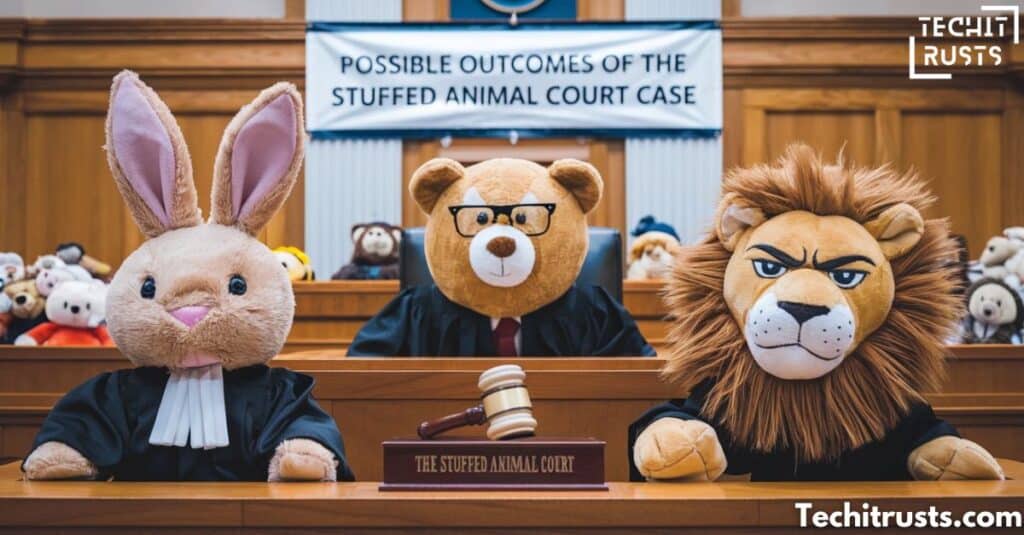The stuffed animal court case is a highly unusual legal dispute that centers on a simple, yet emotionally significant object—a beloved stuffed bear, known as Bearington. While this case may initially seem lighthearted, it brings to the forefront complex legal issues surrounding property law, sentimental value, and inheritance disputes.
The question is simple: who legally owns Bearington after the death of the family matriarch? However, the legal and emotional implications make the case far more complicated.
The courtroom drama revolving around this stuffed animal highlights a key challenge in inheritance law: how do courts assign ownership when an object’s value is more emotional than financial? Additionally, this case raises broader societal questions about family, promises, and the distribution of heirlooms.
In this article, we will cover everything you need to know about the stuffed animal court case, diving into its background, the legal principles at play, and the potential future implications.
Origins and Background of the Stuffed Animal Court Case
The origins of the stuffed animal court case can be traced back to 2022, when a disagreement arose between siblings Jane and Mark Parker after the death of their mother, Emily Parker.
For years, Bearington, a stuffed bear given to Emily as a child, had become a cherished family heirloom. Emily’s children, Jane and Mark, had always shared a bond with the stuffed bear, and both had hoped to inherit it.

Emily Parker passed away without leaving a will, leading to uncertainty about who should inherit the bear. Jane claimed that her mother had verbally promised her Bearington, while Mark, as the older sibling and family caretaker, believed that he should rightfully inherit the bear.
The case quickly escalated into a legal dispute, with both siblings filing claims to gain ownership of the bear. At the center of the case was not only the bear’s sentimental value, but also the broader implications of inheritance law, promises, and family dynamics.
History of Similar Cases Involving Sentimental Heirlooms
While the stuffed animal court case may seem unique, inheritance disputes involving sentimental heirlooms are more common than one might think. In previous cases, items such as jewelry, family photographs, and even old furniture have been the subject of similar lawsuits.
What makes these disputes so challenging is that they often involve deeply personal and emotional ties, rather than financial or material considerations. One notable case, Simms v. Green (2014), involved a dispute over a vintage family piano that had been passed down through generations.
The court ultimately sided with the individual who had taken responsibility for maintaining and caring for the piano, emphasizing the importance of physical custody and care in determining ownership. This ruling set a precedent for similar cases, where emotional attachment and caretaking are weighed against legal documentation.
Timeline of Events Leading to the Legal Dispute
| Event | Date |
|---|---|
| Emily Parker’s Death | June 2022 |
| Initial Family Disagreement | July 2022 |
| Legal Filings | September 2022 |
| Court Hearing Begins | January 2023 |
The timeline above illustrates the quick escalation of the case. Within months of Emily Parker’s death, the family was locked in a courtroom battle over the fate of a stuffed bear.
Key Parties and Their Stakes
Two main parties are involved in the stuffed animal court case:
Jane Parker
Jane, the younger sibling, has stated that her mother explicitly promised her Bearington in a conversation they had before her death. Jane recalls her mother saying, “When I’m gone, Bearington is yours to keep.” Unfortunately, no written documentation exists to support this claim, as their mother died without a will.
Jane’s argument is rooted in sentimental value—she grew up with Bearington and sees the stuffed bear as a symbol of her childhood memories. As a result, Jane is determined to prove that her bond with Bearington outweighs any other considerations.
Mark Parker
Mark, the older sibling, has taken on the role of family caretaker after their mother’s death. He argues that as the oldest child, he should inherit Bearington as part of his responsibility to preserve the family legacy. Mark also believes that his emotional attachment to Bearington is just as strong as Jane’s.
Mark’s legal team is taking a more pragmatic approach. They are focusing on his role as the de facto head of the family and his history of taking care of family possessions, including Bearington. Mark contends that his custodial duties entitle him to the stuffed bear.
What Each Party Stands to Gain
For both Jane and Mark, winning this case means more than just gaining ownership of a stuffed bear—it’s about preserving their mother’s legacy and securing a piece of their family’s history. This emotional weight makes the stakes incredibly high for both siblings, even though the bear itself has no significant market value.
Core Legal Issues at Play

At the heart of the stuffed animal court case is the question of how property law applies to items with sentimental value. The court must decide whether a verbal promise, as claimed by Jane, is enough to establish ownership or whether Mark’s role as the family caretaker gives him a stronger claim.
Legal Basis for the Case
The case raises several important legal questions, including:
- Is sentimental value a legally valid argument for ownership?
- Can verbal promises be considered in the absence of a written will?
- How does inheritance law apply to personal property with no clear financial value?
In cases like this, courts typically rely on established property law to determine ownership. However, the emotional significance of Bearington complicates the legal proceedings, as sentimental value is not easily quantified.
The Role of Sentimental Value in Property Law
While property law traditionally focuses on tangible assets with clear market value, cases involving sentimental value often challenge these conventions. Legal experts argue that sentimental items, such as family heirlooms, should be treated differently because their value cannot be measured in financial terms.

In the stuffed animal court case, Bearington holds immense emotional weight for both Jane and Mark, making it difficult for the court to assess the bear’s true worth. Legal precedents have shown that courts are more likely to rule in favor of the individual who can provide the most convincing evidence of ownership, rather than simply relying on emotional arguments.
Evidence and Its Importance in the Case
Evidence plays a critical role in determining the outcome of the stuffed animal court case. Both Jane and Mark have presented various forms of evidence to support their claims, though much of it is circumstantial.
Types of Evidence Presented
- Testimonies: Several family members and friends have testified about conversations they had with Emily Parker regarding Bearington’s ownership. While some support Jane’s claim that the bear was promised to her, others argue that Mark should inherit it as the family’s caretaker.
- Photographs: Both siblings have presented photographs of themselves with Bearington over the years, attempting to demonstrate their emotional attachment to the bear.
- Family Letters and Journals: Jane has introduced several letters written by her mother, though none of them explicitly mention Bearington. Mark, meanwhile, has submitted family journals that document his role as the primary caretaker of family belongings.
Weight of Evidence in Sentimental Cases
In legal disputes involving sentimental items, courts typically place more weight on documented evidence, such as wills or written promises. Unfortunately, in the stuffed animal court case, no such documentation exists. As a result, the court is left to rely on testimony and circumstantial evidence, which complicates the decision-making process.
| Type of Evidence | Plaintiff (Jane) | Defendant (Mark) |
|---|---|---|
| Verbal Promises | Yes | No |
| Photographs | Yes | Yes |
| Family Letters | Yes | No |
| Family Journals | No | Yes |
The table above highlights the types of evidence presented by both parties. While Jane has focused on verbal promises and family letters, Mark has leaned more heavily on family journals and his role as the family’s caretaker.
Precedent and Its Impact
Legal precedent plays a significant role in shaping the outcome of the stuffed animal court case. Although cases involving sentimental heirlooms are relatively rare, there are several key rulings that could influence the court’s decision.
Relevant Legal Precedents
- Thompson v. Thompson (2010): This case involved a dispute over the inheritance of a family-owned vintage car. The court ruled in favor of the individual who could provide written evidence of ownership, despite emotional arguments from other family members. This precedent suggests that documented evidence is likely to carry more weight in the stuffed animal court case.
- Simms v. Green (2014): As mentioned earlier, this case centered on a family heirloom (a piano) and the question of who should inherit it. The court ruled in favor of the individual who had taken responsibility for maintaining and caring for the item, even though others in the family had stronger emotional ties.
How Precedent Influences Court Decisions
In both of these cases, the court prioritized written evidence and physical custody over emotional arguments. This suggests that the outcome of the stuffed animal court case will likely depend on which sibling can provide the strongest evidence of ownership, rather than simply relying on sentimental value.
Legal Strategies and Tactics
Both Jane and Mark have employed different legal strategies in their quest to win ownership of Bearington. Each strategy reflects the unique strengths and weaknesses of their cases.
Jane’s Legal Strategy: Emotional Appeal
Jane’s legal team has focused on the emotional significance of Bearington and the verbal promise made by her mother. They have emphasized the deep bond between Jane and her mother, painting a picture of Bearington as a symbol of that relationship.
This strategy is risky, however, as verbal promises are notoriously difficult to prove in court. Without written documentation to support her claim, Jane’s case hinges on the credibility of the witnesses who testified on her behalf.
Mark’s Legal Strategy: Focus on Physical Custody
Mark’s legal team has taken a more practical approach, emphasizing his role as the family caretaker and his history of taking responsibility for family possessions. They have argued that Mark’s physical custody of Bearington, combined with his status as the oldest sibling, gives him a stronger claim to ownership.

This strategy aligns more closely with established legal precedent, which tends to favor individuals who have maintained physical control over the disputed property.
Public Perception and Media Coverage
The stuffed animal court case has captured public attention, in part because of its unusual subject matter. The idea of a court battle over a stuffed bear has led to widespread media coverage, with many outlets focusing on the emotional and familial aspects of the case.
Public Reactions to the Case
Public reactions to the case have been mixed. Some people sympathize with Jane’s emotional appeal, arguing that her mother’s verbal promise should be honored. Others side with Mark, believing that his role as the family caretaker gives him a more legitimate claim to Bearington.
In online forums and social media, discussions about the case have ranged from humorous to deeply emotional. Many people see the case as a cautionary tale about the importance of creating a clear will to avoid similar disputes.
Media Coverage and Its Impact
The media has played a significant role in shaping public opinion about the stuffed animal court case. Several news outlets have covered the case, with some even interviewing legal experts to provide analysis of the potential outcomes.
The heightened media attention has added pressure to both parties, as their personal lives and family dynamics have been scrutinized in the public eye. For Jane and Mark, the court case is no longer just about Bearington—it has become a public spectacle that has exposed the complexities of their family relationships.
Possible Outcomes of the Stuffed Animal Court Case

As the case moves closer to a resolution, several potential outcomes have emerged. Each outcome carries its own set of legal and emotional ramifications.
Outcome 1: Jane Wins Ownership
If the court rules in favor of Jane, it will likely do so based on the credibility of her witnesses and the strength of her emotional appeal. This outcome would set a precedent for future cases involving verbal promises and sentimental items.
Outcome 2: Mark Wins Ownership
If the court sides with Mark, it will likely do so based on his role as the family caretaker and his physical custody of Bearington. This outcome would reinforce the importance of physical control and caretaking in inheritance disputes.
Outcome 3: Shared Custody or Settlement
Another possibility is that the court could rule in favor of a shared custody arrangement, where both siblings have access to Bearington. Alternatively, the siblings could reach a settlement outside of court, avoiding a definitive ruling on ownership.
Implications for Future Legal Cases
The stuffed animal court case could have far-reaching implications for future legal cases involving sentimental heirlooms and verbal promises. If the court rules in favor of Jane, it could set a precedent for the consideration of sentimental value and verbal promises in inheritance disputes. However, if the court sides with Mark, it would reinforce the importance of physical custody and written evidence.
How This Case Could Influence Future Legislation
Legal experts have suggested that the outcome of the stuffed animal court case could prompt changes in inheritance law, particularly regarding the treatment of sentimental items. If the court rules in favor of Jane, legislators may consider introducing new laws that address the unique challenges of disputes involving sentimental value.
On the other hand, if the court sides with Mark, the case could serve as a reminder of the importance of creating a clear will and documenting ownership of personal property.
Frequently Asked Questions (FAQs)
What is the stuffed animal court case about?
The stuffed animal court case is a legal dispute between siblings Jane and Mark Parker over the ownership of Bearington, a beloved stuffed bear that belonged to their late mother. The case centers on the question of whether a verbal promise or physical custody should determine ownership of the bear.
Who are the main parties involved in the stuffed animal court case?
The main parties in the case are Jane Parker, who claims that her mother verbally promised her the bear, and Mark Parker, who argues that his role as the family caretaker entitles him to ownership.
What legal principles are at play in the stuffed animal court case?
The case involves several key legal principles, including property law, inheritance law, and the consideration of sentimental value. The court must decide whether a verbal promise or physical custody is more important in determining ownership.
How does the stuffed animal court case compare to similar legal disputes?
The stuffed animal court case is similar to other inheritance disputes involving sentimental items, such as family heirlooms. In these cases, courts typically prioritize written evidence and physical custody over emotional arguments.
What role do expert witnesses play in the stuffed animal court case?
Expert witnesses, such as legal analysts and family law experts, have provided testimony to help the court understand the legal implications of the case. Their insights have been crucial in shaping the court’s understanding of property law and sentimental value.
What are the possible outcomes of the stuffed animal court case?
The possible outcomes include Jane winning ownership, Mark winning ownership, or a shared custody arrangement. Each outcome carries its own set of legal and emotional implications for the parties involved.
How might the stuffed animal court case influence future legal decisions?
The outcome of the case could set a precedent for future legal disputes involving sentimental heirlooms and verbal promises. If the court rules in favor of Jane, it could prompt changes in inheritance law to better address the unique challenges of sentimental items.
Conclusion
The stuffed animal court case offers several important lessons for families and individuals alike. Perhaps the most significant takeaway is the importance of creating a clear and legally binding will to avoid disputes over sentimental items. Additionally, the case highlights the complexities of property law and the challenges of assigning ownership to items with sentimental value.
For Jane and Mark, the outcome of the case will have a profound impact on their lives and their relationship. Regardless of who ultimately wins ownership of Bearington, the case serves as a reminder that family heirlooms are often worth more than their financial value—they represent memories, relationships, and a connection to the past.

Ashi is the site admin for “techitrusts.com” and specializes in writing within the journal category. If you need more detailed information about his background or work, feel free to ask!